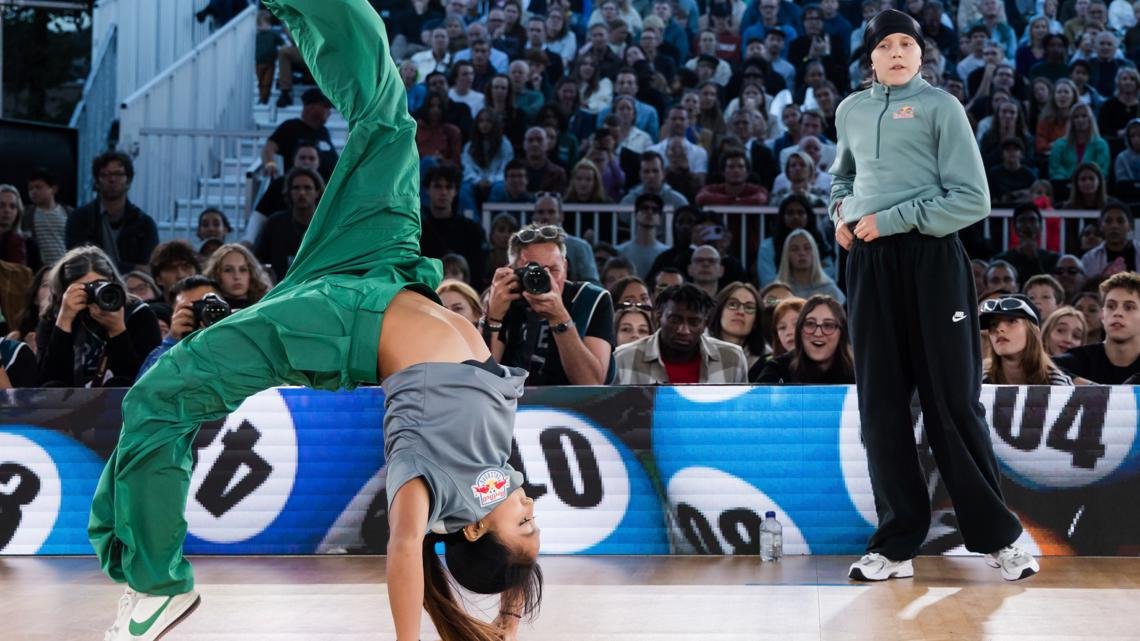Entertainment
Beyond the Windmill: Key Highlights to Watch as Breaking Debuts at the Olympics

Breaking, or breakdancing, makes its historic debut in the 2024 Summer Olympics, bringing complexity and culture to the global stage.
PARIS, France — Breakers from across the globe are set to perform at the Olympics.
On Friday, breakdancers will align their moves with the DJ’s breakbeat, facing the largest audience the sport has ever seen. Earlier this week, they tested the dance floor at the Place de la Concorde, which mimics a giant record with a massive replica of a boombox as the backdrop.
“Even though people weren’t there yet, I could just see the crowd already,” said American breaker Logan Edra, also known as “b-girl Logistx.” “And the floor felt amazing.”
A total of 33 breakdancers from 15 countries, including the Refugee Olympic Team, will compete for the first-ever Olympic gold in breaking on Friday and Saturday.
Breaking, which originated from Black and brown communities in the Bronx during the 1970s, is a unique Olympic event blending elements of gymnastics, martial arts, music, and improvisation. The competition utilizes the Trivium judging system to assess various aspects such as technique, vocabulary, execution, musicality, and originality.
“This will be the only sport incorporating other elements of hip-hop, including a DJ and an emcee,” said Ronnie Abaldonado, a breaker and NBC commentator for the event.
The DJ will play a crucial role, setting the competition’s atmosphere.
“Breaking is about the party, and the DJ facilitates that,” said Zack Slusser, vice president of Breaking for Gold USA and USA Dance.
Slusser likened breaking to live storytelling, with breakdancers and the DJ unfolding a narrative in real-time for the audience.
Breakdancers won’t know the competition music in advance, adding an element of surprise that enhances the raw and emotional atmosphere. According to Tyquan Hodac, executive director of Breaking for Gold USA, “It’s not just a spectator sport; the audience is part of the whole show.”
Breaking comprises four main elements: Toprock, Power Moves, Footwork, and Freezes. Routines are often rehearsed, but spontaneity and improvisation remain crucial, with “biting” or copying moves being penalized.
The Olympic competition starts with a round-robin phase where groups of four will face off. Two breakers will advance from each group to the quarterfinals, leading to the finals to determine the champion by evening’s end.
The b-girls will kick off the competition on Friday, starting with a pre-qualifier match between India’s Sardjoe and refugee team’s Manizha Talash. Talash, originally from Afghanistan, received a late invitation due to her inspiring story.
The b-boys will compete on Saturday.
Here are the four essential elements to watch in breaking:
Toprock
The introduction phase where a breaker starts their dance while still standing, showcasing their style before going to the floor.
Footwork
Also called “downrock,” these are moves performed on the ground, utilizing hands for support while moving legs through various steps.
Power Moves
Dynamic acrobatic moves like head spins, air flares, and windmills that involve repetitive, circular movements.
Freezes
Static positions where a breaker holds a move for a few seconds, typically synced with a specific beat in the music.













![Addison Waelbroeck's March 31, 2025 mugshot overlays a screenshot of Waelbroeck hurling racial slurs in a video provided to InMaricopa earlier this year. [PCSO/submitted]](https://arizonanews.org/wp-content/uploads/2025/04/Unlicensed-Landscapers-Racist-Outburst-Leads-to-Jail-Time-for-Threatening-80x80.png)




